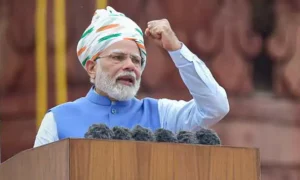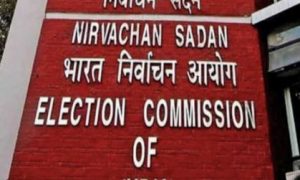In a rising interest rate cycle, banks have been keen to pass on policy rate hikes to borrowers through lending rate hikes than to savers through hikes in deposit rates. The transmission on deposits has been slow on the rationale that banks need to safeguard their margins. This longstanding practice is at risk in the current cycle and banks may find it hard to take baby steps in deposit rate hikes.
Deposits floated by non-banking financial companies (NBFCs), small finance bank deposits, Treasury bills and short-term corporate bonds are becoming popular instruments that may lure money away from bank deposits. High net-worth individuals (HNIs) and even corporate treasuries are looking at these instruments to get more bang for their buck.
Read More: 3 post office schemes with just 5 year lock-in period offering up to 6.8% interest
Treasury bills that have a tenure up to one year offer a higher return than deposits. The yield on the one-year Treasury bill has risen by 150 basis points (bps) to 6.28 percent in just two months and is poised to rise more. This is much above the 5.30 percent interest rate State Bank of India (SBI) offers on its one-year deposits. Pitted against retail inflation of 7.04 percent in May, bank deposits come off poorly against T-bills and other instruments.
Fintechs up competition
Non-bank lenders such as Shriram Transport Finance Corporation, Mahindra & Mahindra Financial Services, and Bajaj Finance have hiked their deposit rates recently. The one-year deposit rate of these lenders are at least 50-100 bps higher than bank fixed deposit rates. Small finance banks are perhaps the toughest competitors of big lenders. Interest rates offered by them even on savings deposit accounts have been higher compared with what big banks offer.
To be sure, NBFCs and small finance banks have been offering higher interest rates on deposits than banks in the past as well. However, this time around the aggression and competition is more intense as non-bank lenders are keen to keep their margins from falling sharply due to rising cost of borrowing. After all, their biggest source of funding, bank loans and bonds, have turned expensive. More importantly, what has upped the game is their tie-ups with fintech companies. Large non-bank lenders such as Bajaj Finance that rely on their brand popularity and credibility to get deposits are able to push deposits more easily than before through their proprietary superapps.
In an interview with Moneycontrol in May, Shriram Transport Finance managing director Umesh Revankar had said that the lender would use its superapp to offer savings and investment products to its customers, its own deposits being a part of these offerings.
Read More: Senior Citizens Savings Scheme: Interest Rates, Tax Benefits, Who Can Invest, Key Details
Market instruments weigh in
Treasury bills and short-term money market instruments could gain currency with investors, pulling money incrementally from bank deposits. “T-bill yields have surged recently and offer much better returns at zero risk than bank deposits. Treasuries are actively looking at these,” said the head of treasury at a private company on condition of anonymity.
While SBI’s deposit rate is far below what a one-year T-bill gives, deposit rates of private sector banks such as HDFC Bank and ICICI Bank too are either lower or at the same level as T-bill yields. T-bills match bank deposits on liquidity and safety aspects and, therefore, have an edge over deposits now due to higher returns. In fact, T-bill yields are likely to rise further given an expected large supply from the government. This could be a challenge for banks to sustain deposit rates in the coming months.
While T-bills may be attractive for large investors such as HNIs and corporate treasuries, small savings deposits are direct competition for retail deposits of banks. Lenders have dodged a bullet as the government kept the interest rate on small savings deposits unchanged for the current year. That said, analysts warn that a hike in small savings rates is imminent given the sharp increase in bond yields. “Going forward, a sharp rise in call and Gsec rates along with higher government borrowings will force hikes in small savings rates by 50-75bps as the spread between the PPF rates and benchmark Gsec yield has turned negative. Thus, tightening of banking sector liquidity and higher rates on competing small deposits will accelerate the rush for banks to garner term deposits at higher rates,” analysts at JM Financial wrote in a note.
Biting the bullet
Banks seem to have realised the challenges ahead for growing deposits. As such, deposit growth has begun to lag that of credit growth after many quarters. As of June 17, the year-on-year deposit growth is down to 8.3 percent from 10.3 percent a year ago, as per Reserve Bank of India data. Loan growth during the same period recovered to 13.2 percent versus 5.8 percent. Analysts expect single-digit deposit growth for FY23 and even in FY24. Negative real interest rates could catch up with investor sentiment and dampen deposit growth.
SBI has hiked its retail deposit rates by about 20 bps and bulk deposit rates by 40-90 bps. HDFC Bank has lifted them by 25 bps so far in FY23. As is evident, the hikes so far have been small on the retail side. Analysts expect the pressure on deposit rates to increase progressively as surplus liquidity reduces.
The upshot is that the battle for deposits is intense this time around and big banks cannot afford piecemeal hikes in deposit rates as in the past.



































